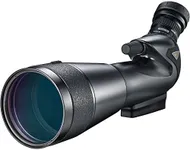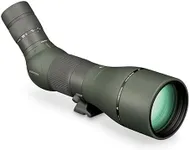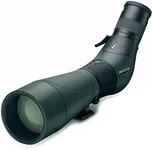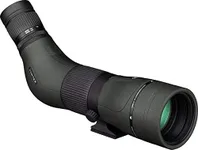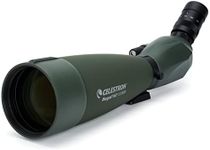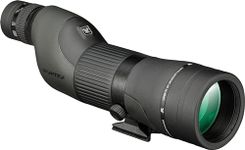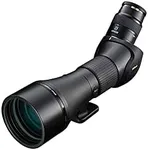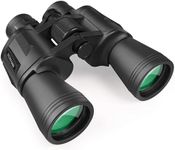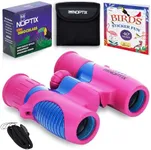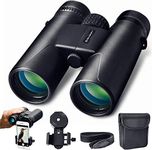Buying Guide for the Best Hunting Spotting Scopes
Choosing the right hunting spotting scope can significantly enhance your outdoor experience, allowing you to observe wildlife and landscapes with clarity and precision. When selecting a spotting scope, it's essential to consider various specifications that will impact its performance and suitability for your needs. Understanding these key specs will help you make an informed decision and ensure you get the best fit for your hunting adventures.MagnificationMagnification refers to how much closer the scope can make distant objects appear. This is important because higher magnification allows you to see more detail. Spotting scopes typically range from 15x to 60x magnification. Lower magnification (15x-30x) is suitable for scanning large areas and general observation, while higher magnification (30x-60x) is better for detailed viewing of specific targets. Choose a magnification level based on your typical hunting environment and the distance at which you need to observe.
Objective Lens DiameterThe objective lens diameter is the size of the front lens, measured in millimeters. This spec is crucial because a larger diameter allows more light to enter the scope, resulting in brighter and clearer images, especially in low-light conditions. Common sizes range from 50mm to 80mm. Smaller diameters (50mm-60mm) are more compact and lightweight, ideal for portability, while larger diameters (70mm-80mm) provide better image quality but are bulkier. Consider your need for portability versus image clarity when choosing the objective lens diameter.
Field of ViewField of view indicates the width of the area visible through the scope at a specific distance, usually measured in feet at 1000 yards. A wider field of view allows you to see more of the landscape, which is useful for tracking moving targets and scanning large areas. Narrower fields of view provide more detailed images of specific points. If you need to observe wide areas or track animals, opt for a scope with a wider field of view. For detailed observation of stationary targets, a narrower field of view may be sufficient.
Eye ReliefEye relief is the distance between your eye and the scope's eyepiece where you can still see the full image. This is important for comfort, especially if you wear glasses or need to use the scope for extended periods. Longer eye relief (15mm-20mm) provides more comfort and flexibility in positioning your eye, while shorter eye relief (10mm-15mm) may require you to be closer to the eyepiece. Choose a scope with adequate eye relief to ensure comfortable viewing during your hunting trips.
Lens CoatingLens coating refers to the treatment applied to the scope's lenses to reduce glare and improve light transmission. This is important for achieving clear and bright images, especially in challenging lighting conditions. Coatings can range from single-layer to multi-layer treatments. Multi-coated lenses offer better performance by reducing reflections and enhancing image quality. If you often hunt in varying light conditions, opt for a scope with high-quality lens coatings to ensure optimal visibility.
Waterproof and FogproofWaterproof and fogproof features ensure that the scope remains functional in wet and humid conditions. This is crucial for outdoor use, as it prevents moisture from entering the scope and fogging up the lenses. Look for scopes with O-ring seals and nitrogen or argon purging for reliable waterproof and fogproof performance. If you hunt in diverse weather conditions, choosing a scope with these features will ensure durability and consistent performance.
Weight and SizeWeight and size are important considerations for portability and ease of use. Lighter and more compact scopes are easier to carry and handle, making them ideal for long hunting trips and frequent movement. However, larger scopes may offer better image quality and stability. Balance your need for portability with the performance benefits of larger scopes to find the right fit for your hunting style.

